Story at a glance:
- Examples of biomass include: dedicated energy crops, crop residues, forestry residues, wood processing residues, algae and aquatic plants, sorted municipal solid waste, wet waste, and biogas.
- Biomass can be used in the built environment to generate heat and electricity or as an ingredient in certain bioproducts and building materials.
- HeatMasterSS produces several hydronic furnace systems that are capable of burning a range of biomass feedstocks.
With the burning of fossil fuels rapidly contributing climate catastrophe, making the switch to renewable energy sources has never been more important.
Solar and wind power are two of the most popular renewable energy sources, but another category of natural resources exists that is both renewable and reliable while also being found all around us.
Biomass, or the organic matter produced by plants and animals, is an extremely abundant resource with a high potential for use in bioenergy operations. In this article we explore biomass’ efficacy as a renewable resource and take a look at eight types of biomass feedstocks.
What is Biomass?
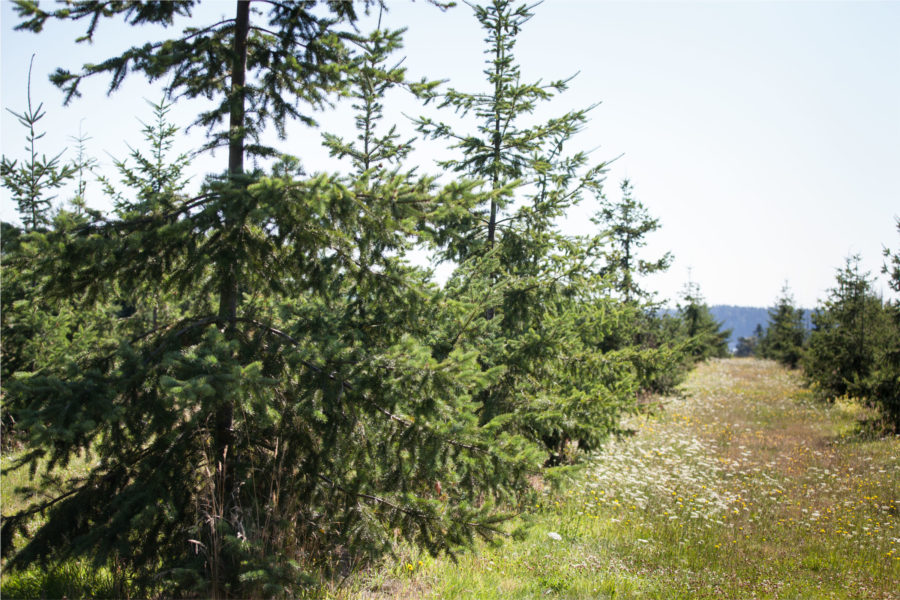
Biomass describes the renewable organic matter produced by both plants and animals. Photo courtesy of Western Forest Products
Biomass is best understood as the renewable organic matter produced by either plants or animals. Examples of biomass include everything from crops and forest detritus to food waste and treated sewage. Biomass may be burned to provide heat and electricity, converted into liquid and gaseous fuels, or used in the manufacture of various bioproducts—although most references to biomass refer to the first application.
Humans have leveraged biomass to their advantage for thousands of years, both as a source of raw materials and as a source of energy, with many developing countries around the world still relying on biomass as a primary fuel source for heating and cooking. In the US biomass only accounts for about 5% of total primary energy consumption, with the direct combustion of wood being the largest contributor.
In recent years renewed interest has been paid to biomass as a source of renewable energy—one that could help to replace fossil fuels, reduce energy-related emissions, and support a circular economy.
8 Types & Examples of Biomass
There are many materials, residues, and wastes that can be used as biomass feedstocks, of which may be sorted into eight core categories.
1. Dedicated Energy Crops

Dedicated energy crops are crops grown specifically to provide biomass energy. Photo courtesy of Il Borro
Dedicated energy crops are a category of crops that are specifically cultivated to provide biomass energy. There are two basic categories into which dedicated energy crops may be separated: herbaceous and woody.
- Herbaceous energy crops. Includes a wide range of perennial grasses—such as bamboo, kochia, sorghum, wheatgrass, and switchgrass, et cetera—as well as oily and starchy crops; traditionally used in the production of biodiesel and bioethanol.
- Woody energy crops. Refers to fast-growing hardwood trees like black walnut, silver maple, sycamore, sweetgum, and hybrid poplar that may be harvested anywhere from 5 to 8 years after their initial planting; may be burned as is to produce heat or generate electricity.
Herbaceous energy crops may be harvested at a faster rate than woody energy crops, but woody crops provide greater ecosystem benefits during their maturation period, as they help improve water quality, reduce erosion, bolster soil health, and increase biodiversity. Both types of dedicated energy crops can be grown together using various agroforestry methodologies as a means of diversifying farm income.
2. Crop Residue
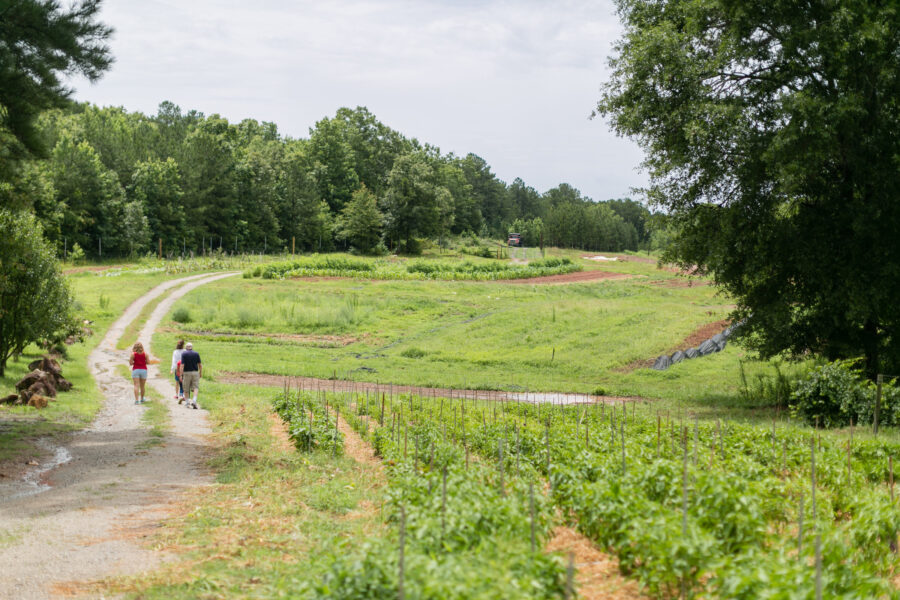
Farming operations produce large amounts of biomass by way of crop residues, or the unused stalks, husks, leaves, and other plant parts left behind after the harvest. Photo by J. Ashley
Agricultural crop residue, on the other hand, is a type of biomass feedstock that refers to the unused straw, stalks, cobs, husks, leaves, and stubble left behind after other crops have been harvested. Crop residue is one of the most abundant forms of biomass and is an extremely effective way to utilize agricultural resources without having to interfere with or otherwise disrupt the production of food, fiber, feed, and other agricultural products.
3. Forestry Residues
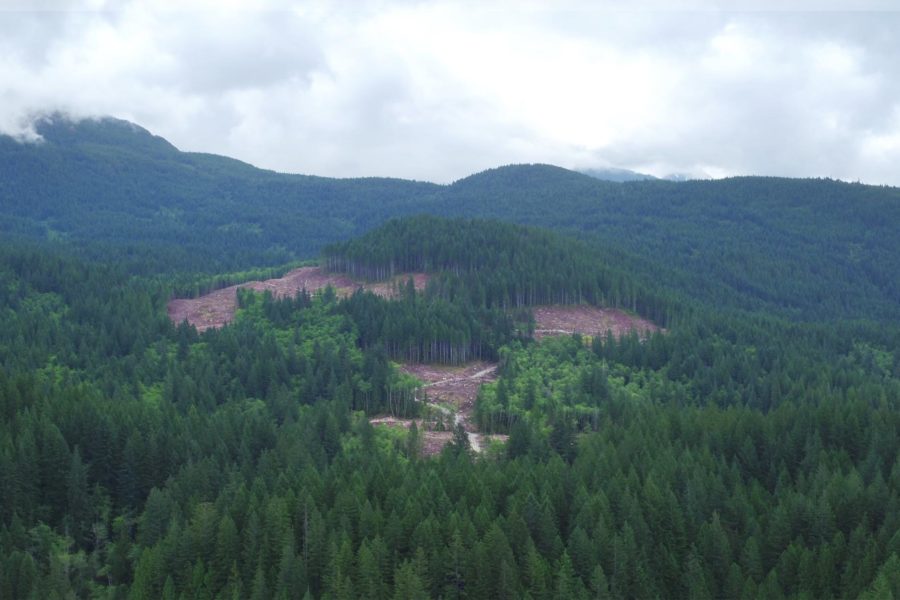
Forestry residuals like cut limbs, stumps, and the tops of trees are another source of biomass. Photo courtesy of Western Forest Products
Similar to crop residue, forestry residues encompass the woody detritus left behind after logging and other forestry operations, a distinction which generally includes cut or fallen limbs, the tops of trees, stumps, and any trees or tree components deemed unmerchantable (i.e. diseased, dead, and malformed trees).
As a biomass feedstock forestry residues are typically burned as is for heat, cooking, or generating electricity. Forest detritus can also be used as raw material in the production of various products, including furniture, wood chips, mulch and livestock litter/bedding, et cetera.
Collecting forestry residues for biomass is also extremely beneficial when it comes to maintaining forest health, as it reduces the risk of wildfires and helps protect forests against pests and disease.
4. Wood Processing Residues

Sawdust, wood chips, shavings, bark, and other wood processing residues are a convenient source of biomass. Photo courtesy of American Wood Council
As trees are processed for lumber, pulp, and other woody products, a variety of byproducts and waste materials—sawdust, wood chips, bark, branches, leaves, et cetera—are produced, of which are collectively referred to as wood processing residues. Wood processing residues are typically an extremely convenient source of biomass, as most wood processing sites already take measures to collect these byproducts. Once collected, these residues may be used as fuel or in the manufacture of various bioproducts.
“Wood residuals—the part of a log not included in the final structural product, like sawdust, wood chips, shavings or edgings—are often used to power mills through biomass limiting reliance on petroleum-based fuels and waste,” Anna Ostrander, LCA data specialist for the American Wood Council, wrote in a previous gb&d article. “Furthermore, these residuals, if not used to power their own mill, can be made into wood pellets for biofuel and used as a feedstock in the pulp and paper sector.”
Residuals like wood chips can also be burned as-is for fuel, used as mulch for gardening and landscaping, and even processed into particle-board for construction applications.
5. Algae & Aquatic Bacteria

Aquatic biomass like seaweed can be fermented to produce bioethanol, whereas certain algae can be used in the production of biodiesel. Photo courtesy of Allsteel
Terrestrial vegetation is not, however, the only plant-based source of biomass—microalgae, macroalgae (i.e seaweed), and cyanobacteria can also be used as biomass feedstocks. Most strains of microalgae, for example, store their energy in the form of natural oils, of which may be extracted and refined to manufacture various biofuels, particularly biodiesel. Many seaweeds, on the other hand, contain bioactive compounds and unique carbohydrates that make them extremely well-suited for fermentation, a process that can in turn be used to create bioethanol.
Cyanobacteria are another source of aquatic biomass with a myriad of potential uses. Sometimes referred to as blue-green algae, cyanobacteria are aquatic prokaryotes which possess photosynthetic pigments that allow them to convert solar energy into chemical energy via photosynthesis. Currently, cyanobacteria are used primarily in the production of biofertilizers thanks to their ability to make atmospheric nitrogen easily available to plants, although ongoing research suggests they may be used in the creation of biodiesel and bioethanol as well. Cyanobacteria also produce a variety of secondary metabolites—that is, organic bioactive compounds that have a range of potential applications in cosmetics and medicine.
6. Sorted Municipal Solid Waste
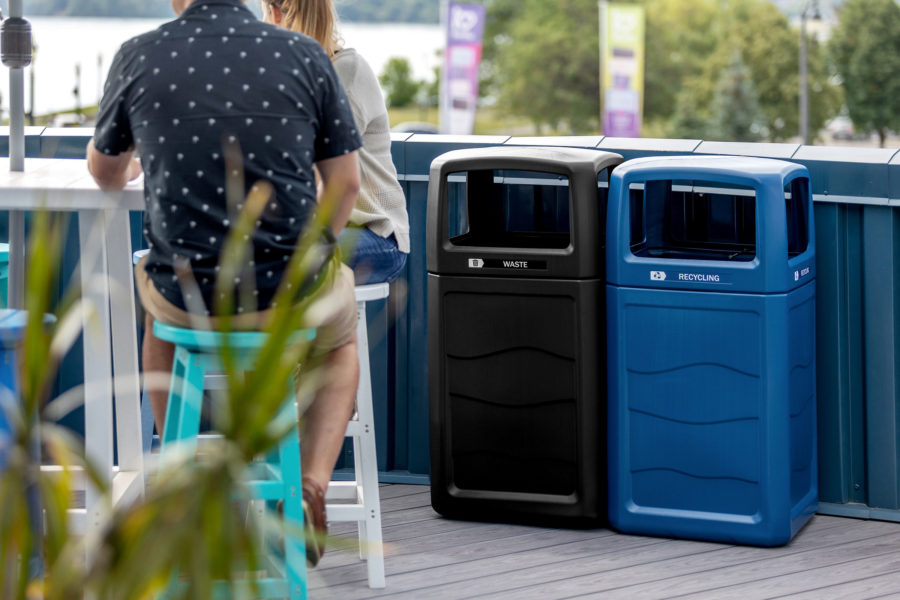
Sorted municipal solid waste is a source of biomass that can be burned in waste-to-energy plants or processed into refuse-derived fuel. Photo courtesy of Busch Systems
Sorted municipal solid waste (MSW) is an umbrella term that refers to the mixed solids that make up commercial and residential garbage. When it comes to potential biomass feedstocks, sorted municipal waste provides everything from yard trimmings and food waste to paper, cardboard, natural textiles, and other biogenic solids.
MSW can be used as a biomass resource in several ways, with the most common being fuel for waste-to-energy plants. These plants typically employ a mass-burn system, in which unprocessed MSW is dumped into a large incinerator and burned to produce heat, which in turn transforms water in a nearby boiler to steam. This high-pressure steam is then used to rotate turbines and generate electricity.
Alternatively, MSW may be processed into refuse-derived fuel. This system involves the removal of all non-combustible materials like glass and metal before shredding the remaining waste. This shredded material is then sold as-is or compacted into bricks, logs, or pellets and sold as fuel.
7. Wet Waste
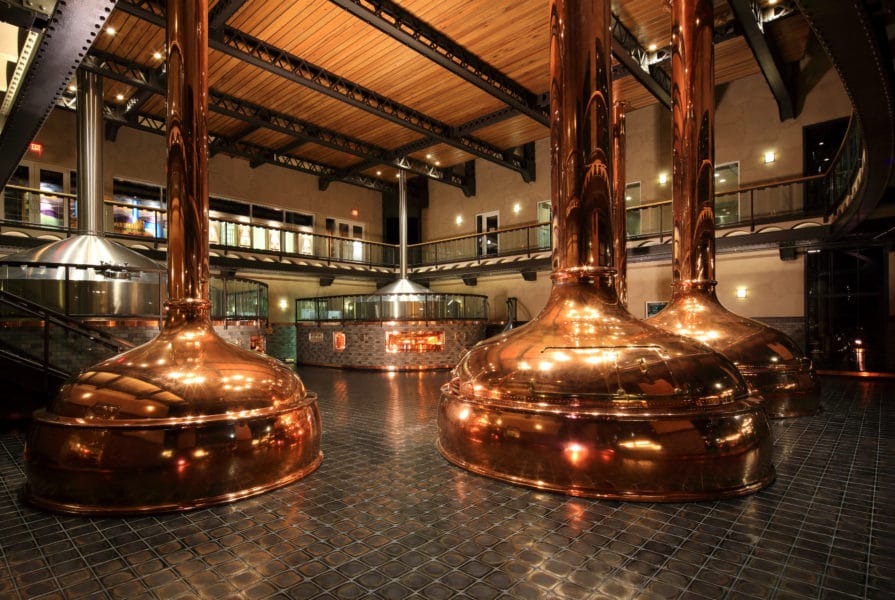
Wet waste is a type of biomass that includes food waste, treated sewage, organic wastes from industrial operations, and manure slurry. Photo courtesy of Sierra Nevada Brewing Co.
Wet waste is a catch-all term that typically encompasses residential, commercial, and institutional food waste; organic wastes from industrial operations; biosolids rich in organic matter (i.e. treated sewage from municipal wastewater plants); and manure slurry produced by livestock operations.
Wet waste can be used to create both a charcoal-like solid and liquid fuels. The former may be created through hydrothermal carbonization (HTC), a thermochemical conversion process that involves feeding wet waste into a reactor and heating it at a specific temperature for a set length of time. This process produces an aqueous slurry that is filtered or spun in a centrifuge to separate the water from the solids and create a “wet cake.” The wet cake is then dried to create biochar, a carbon-rich solid that may be used in wastewater treatment, as a soil amendment, for carbon sequestration, and more.
Hydrothermal liquefaction (HTL) is another way to convert wet waste biomass into a usable product. HTL refers to a thermal depolymerization process wherein sewage sludge is subjected to moderately high temperatures and high pressures to create a liquid bio-crude oil that may be used as-is for heating or refined into biofuels.
8. Biogas
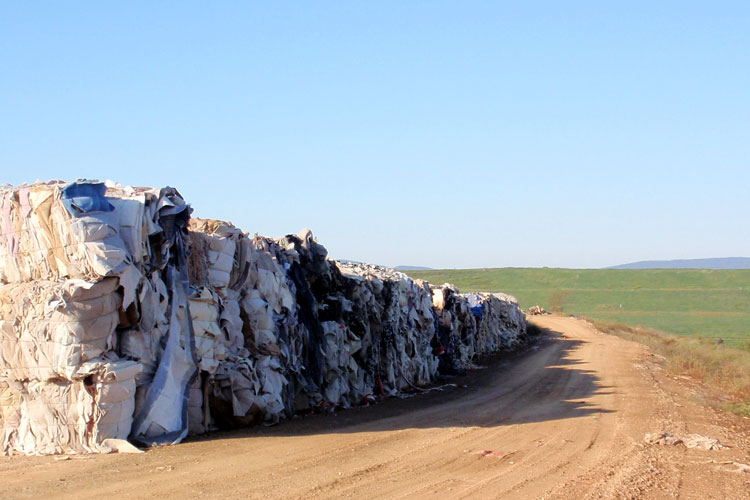
As organic matter breaks down and decomposes in landfills, it produces biogas. Photo courtesy of Aquafil
Though technically a byproduct of other feedstocks, biogas is often treated as a separate category or subcategory of biomass altogether. Biogas is a natural, renewable fuel that is produced when organic matter is broken down by bacteria and other microorganisms in oxygen-free environments. Biogas is primarily composed of carbon dioxide and methane and can be produced intentionally at an industrial scale by way of anaerobic digesters using any of the aforementioned biomass feedstocks.
Biogas can be burned to generate electricity or compressed into liquid form and used as a cleaner alternative to liquified natural gas.
Landfill Gas
Landfill gas (LFG) refers to a specific source of biogas produced by landfills; as organic matter is dumped and left to decompose within the landfill, it is broken down by anaerobic bacteria and produces a mix of gasses, with carbon dioxide and methane being the two most prominent. In the United States, the Clean Air Act of 1990 legally requires landfills to capture and control LFG—though what landfills do with that gas varies from landfill to landfill.
Many landfills simply collect the gas and burn it, a process referred to as flaring; this method for disposing of LFG is convenient, but it is extremely wasteful and still introduces GHGs into the atmosphere. Alternatively, landfills can use collected LFG as a source of renewable energy; this process requires the gas be purified before being burned in a combustion engine, which in turn powers a generator to produce electricity.
Burning landfill gas to generate power still releases GHGs into the atmosphere, but it is a much more efficient way of disposing of LFG compared to flaring, which wastes all of the gas’ potential energy.
Products that Use Biomass in the Built Environment
Now that we’ve a better understanding of the different types of biomass, let’s take a look at a few products that use biomass—either as a fuel or core ingredient—in the built environment.
Biomass Furnaces
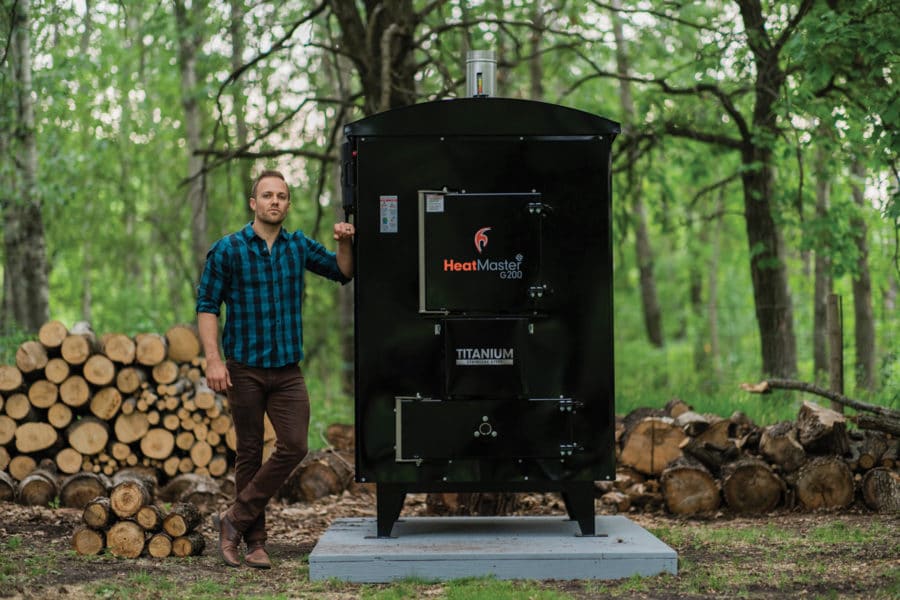
HeatMasterSS offers a range of biomass furnaces that are capable of burning a variety of alternative biomass feedstocks. Photo courtesy of HeatMasterSS
As perhaps the most recognizable and well-known products to use biomass feedstocks in their operation, biomass furnaces are a type of heating system in which renewable fuel sources are burned to power central heating and hot water systems
“Biomass hydronic furnaces use extremely high temperature gasification to produce ultra-efficient (carbon neutral) combustion,” Jake Friesen, founder and CEO of HeatMasterSS, wrote in a previous gb&dPRO article. “The attached bin automatically augurs precise amounts of fuel into the firebox, which heats up the water jacket and produces heat that gets pumped into the building and can be turned into hot air via space heaters on wheels or other forms of desired heat.”
HeatMasterSS is a family-owned company based in Manitoba that has been manufacturing outdoor biomass furnaces since 2001. Originally, the majority of their hydronic furnace models were designed to primarily burn wood byproducts, but they have since expanded the technological capacities of their furnaces to accommodate alternative biomass fuels.
Their line of B Series Multi-Fuel Biomass furnaces, for instance, are capable of burning wood chips, pellets, agricultural screenings, and more. “There’s a long list of fuels the R&D department is working on, including egg shells, manure products, cherry pits—you name it,” Friesen previously told gb&d. “We want our customers to be able to utilize any potential fuel that’s available to them.”
HeatMasterSS has also worked to make their biomass furnaces as efficient as possible by optimizing burn rates and fine-tuning the level of combustion, allowing them to burn cleaner and with fewer emissions.
Anaerobic Digesters
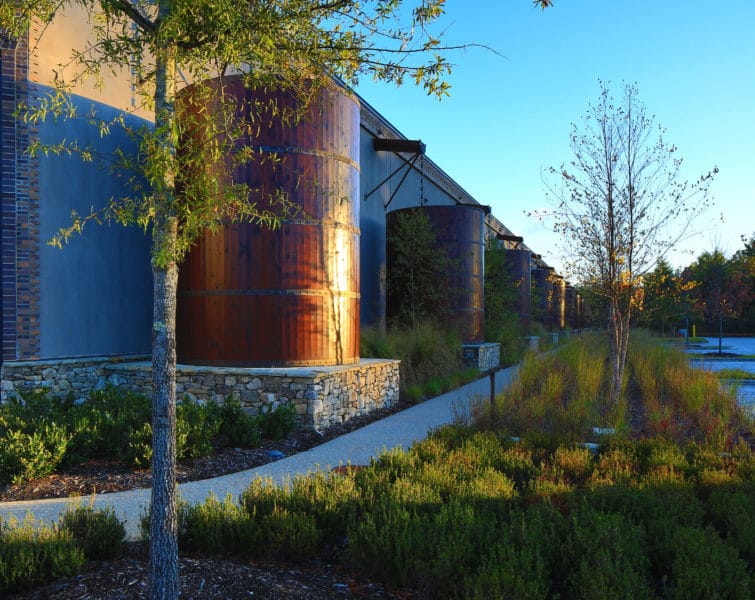
Sierra Nevada’s Mills River brewery uses anaerobic digesters to produce biogas. Photo courtesy of Sierra Nevada Brewing Co.
Anaerobic digesters are a technology used to convert organic matter into biogas that can then be burned to generate electricity or compressed to form liquid fuels. Anaerobic digesters can produce biogas from any biomass feedstock, with most incorporating both wet and solid wastes for maximum efficiency.
An anaerobic digester essentially consists of an enclosed, independent tank into which organic matter is pumped; the waste is then left to sit in this oxygen-free environment, where it is eventually broken down by microorganisms and transformed into methane and CO2. These biogases are then captured and used as an energy source, while any remaining solid material is extracted to be used as fertilizer.
Anaerobic digesters are particularly common at sewage treatment facilities and industrial farms, though they can realistically be implemented at almost any scale. Sierra Nevada Brewing Co.’s Mills River brewery, for example, is a highly-sustainable LEED Platinum-certified brewery and taproom that makes use of biomass energy via biogas produced through anaerobic digestion.
The brewery’s on-site wastewater treatment plant includes a two-phase anaerobic sequencing batch reactor (ASBR) to generate biogas from the facility’s effluent water. The biogas is used to help offset the brewery’s natural gas usage in its boilers and generate electricity by way of two 200-kilowatt microturbines from Capstone Green Energy Corporation.
Bioplastics

Covestro offers MDI—a core component of high efficiency rigid polyurethane insulation—in a climate neutral version through the use of bio-waste as an alternative raw material. Photo courtesy of Covestro
Traditional plastic is typically considered an unsustainable material as it is produced using petroleum—a fossil fuel and nonrenewable resource—does not biodegrade, and emits high levels of GHGs during its manufacturing. Bioplastics, however, are a much more sustainable alternative to conventional plastics thanks to their use of renewable biomass feedstocks in place of fossil fuels, a quality which in turn means they are also biodegradable.
Covestro, for example, is a leading manufacturer of high-quality polymer materials that has pioneered advancements in the use of alternative raw materials for their plastic products. “Covestro has been on the forefront of new research into using plant biomass to extract organic chemicals like acids, esters, alcohols, and phenols from sources including sugar cane, corn, straw, and wood,” Richard Skorpenske, head of sustainability and public affairs at Covestro, wrote in a previous gb&dPRO article.
In 2021, the company started offering a new toluene diisocyanate—a core building block in polyurethane foam—produced in part from organic wastes like used oil and grease. The following year, Covestro helped develop a breakthrough technology for producing the base chemical aniline (crucial to the production of methylene diphenyl diisocyanate, another chemical used in the creation of insulating foams) entirely from biomass. All of the carbon in this base chemical was sourced from industrial sugar, greatly reducing its GHG footprint.



